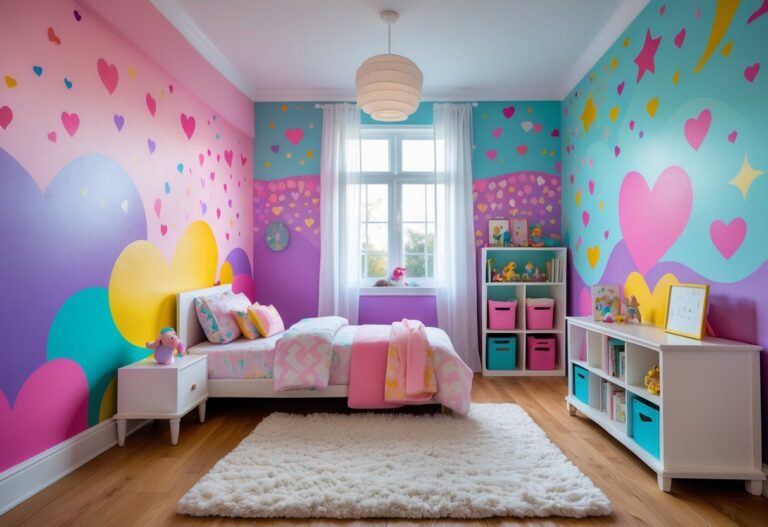
10 Girl Bedroom Designs for Kids That Inspire Creativity and Comfort
Designing a bedroom for a young girl involves creating a space that feels both comfortable and inspiring. It should reflect her personality while offering a place to play, relax, and grow. Choosing the right elements can make the room both functional and enjoyable as she changes.

The best bedroom designs for girls balance fun with practicality, making the space adaptable as she grows older. Simple choices in decor and furniture can easily evolve with her tastes, ensuring the room remains appealing through different stages.
1) Colorful Accent Wall with Playful Patterns
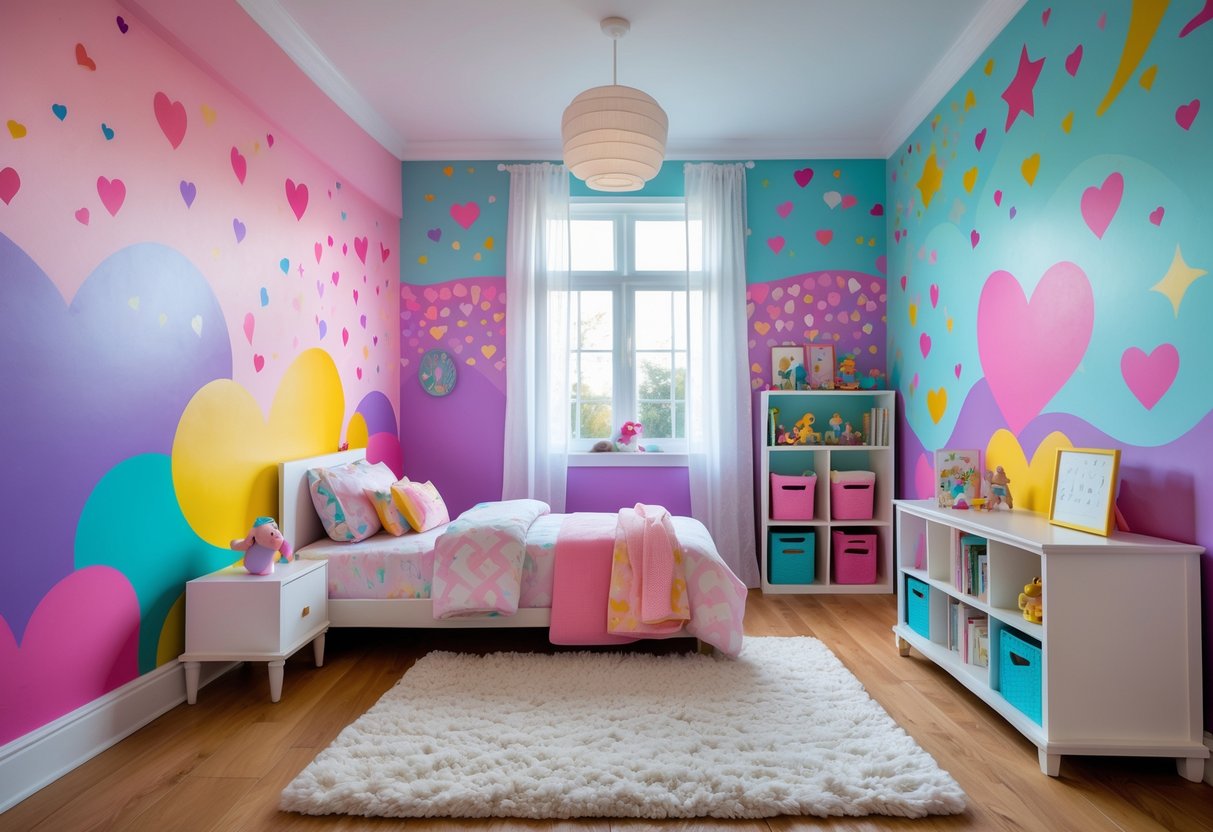
A colorful accent wall adds energy to a girl’s bedroom. Patterns like stripes, circles, or geometric shapes create a fun atmosphere.
Using stencils, decals, or wallpaper with favorite themes helps personalize the space. This design brightens the room without overwhelming it.
2) Canopy Bed with Sheer Drapes
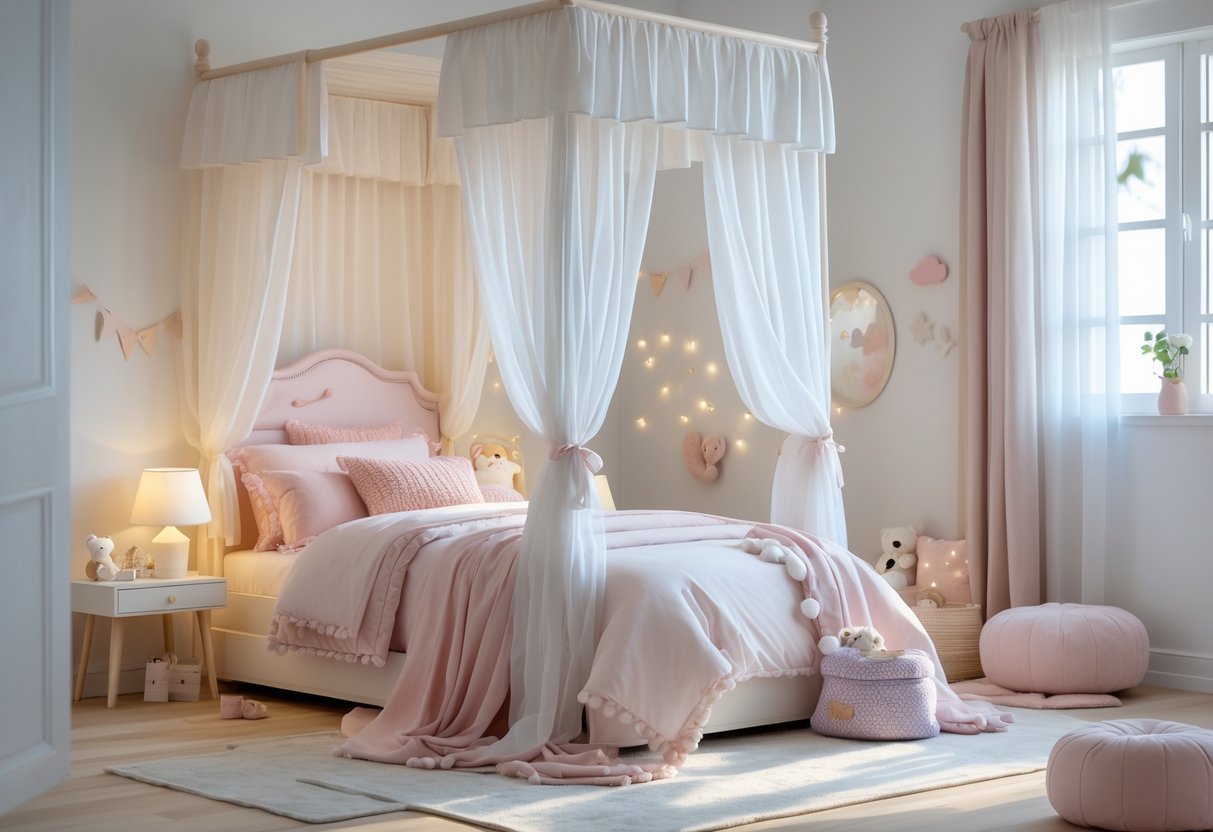
A canopy bed with sheer drapes adds softness and light to a girl’s bedroom. The light fabrics allow sunlight to filter through while giving a sense of privacy. This design works well with pastel colors, creating a calm and gentle space for rest and play.
3) Flexible Storage Solutions with Bins and Baskets
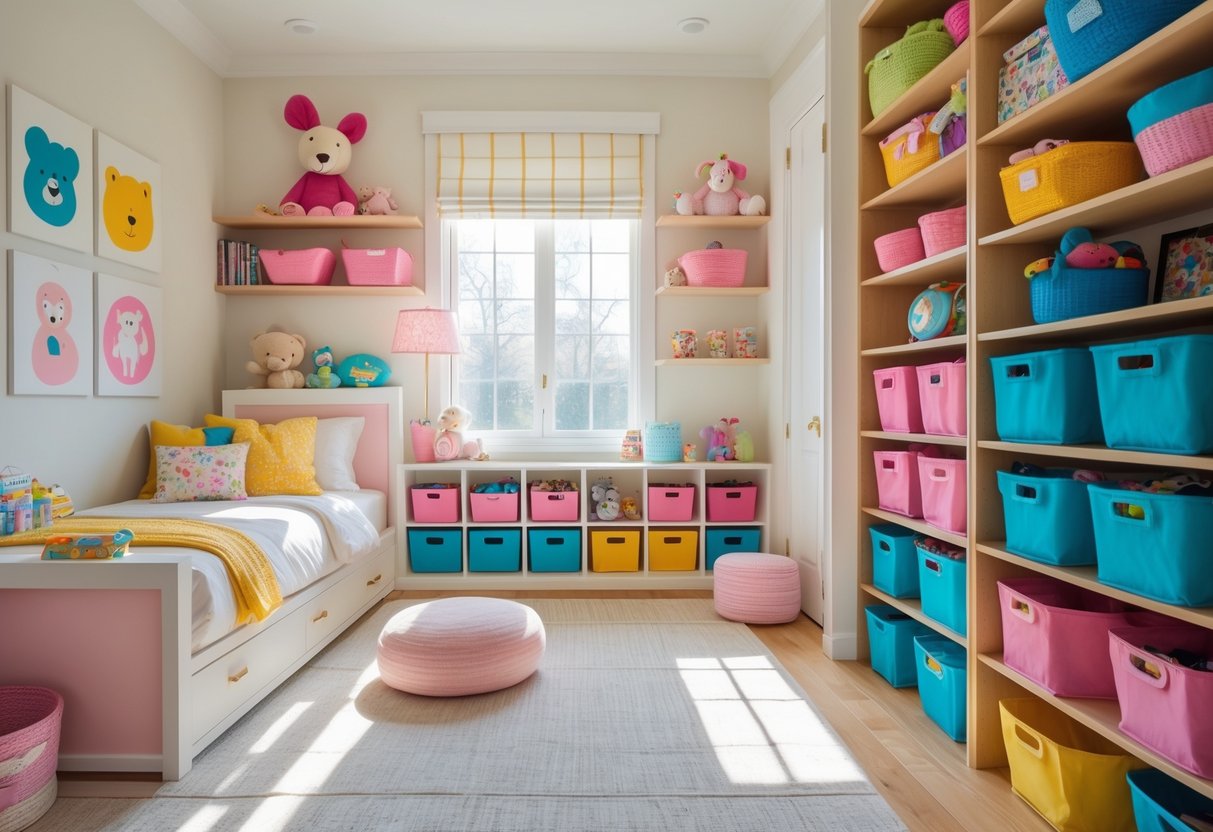
Using bins and baskets offers simple and flexible storage for a girl’s bedroom. They keep toys, clothes, and books organized and easy to access.
Clear or open bins help children find items quickly. Baskets add style while holding smaller items neatly in one place.
These storage options can be moved or changed as needs grow. This helps keep the room tidy without major changes.
4) Multi-Functional Loft Bed with Desk
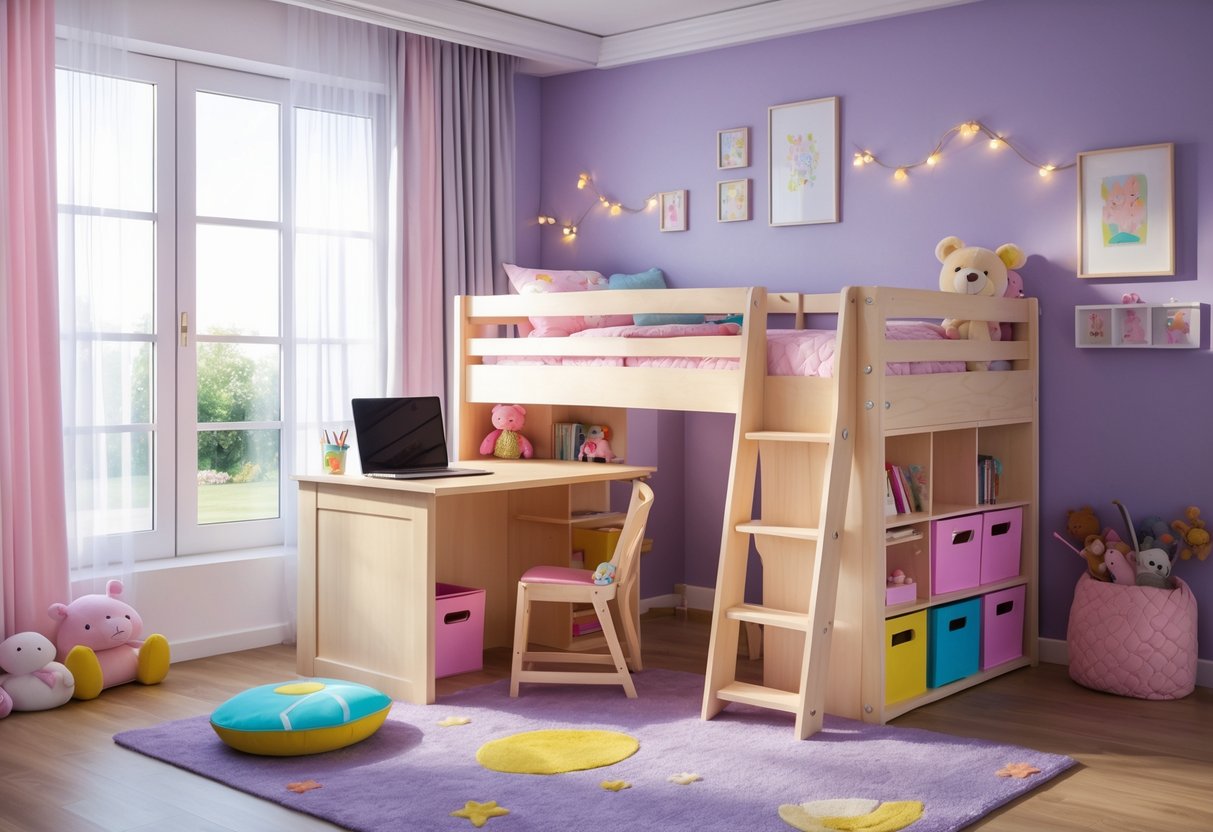
This loft bed combines sleeping, studying, and storage in one space-saving design. It usually includes a built-in desk and shelves beneath the bed for books and supplies. The design helps keep the room tidy while giving kids a comfortable place to sleep and work.
5) Art Gallery Wall to Showcase Creativity
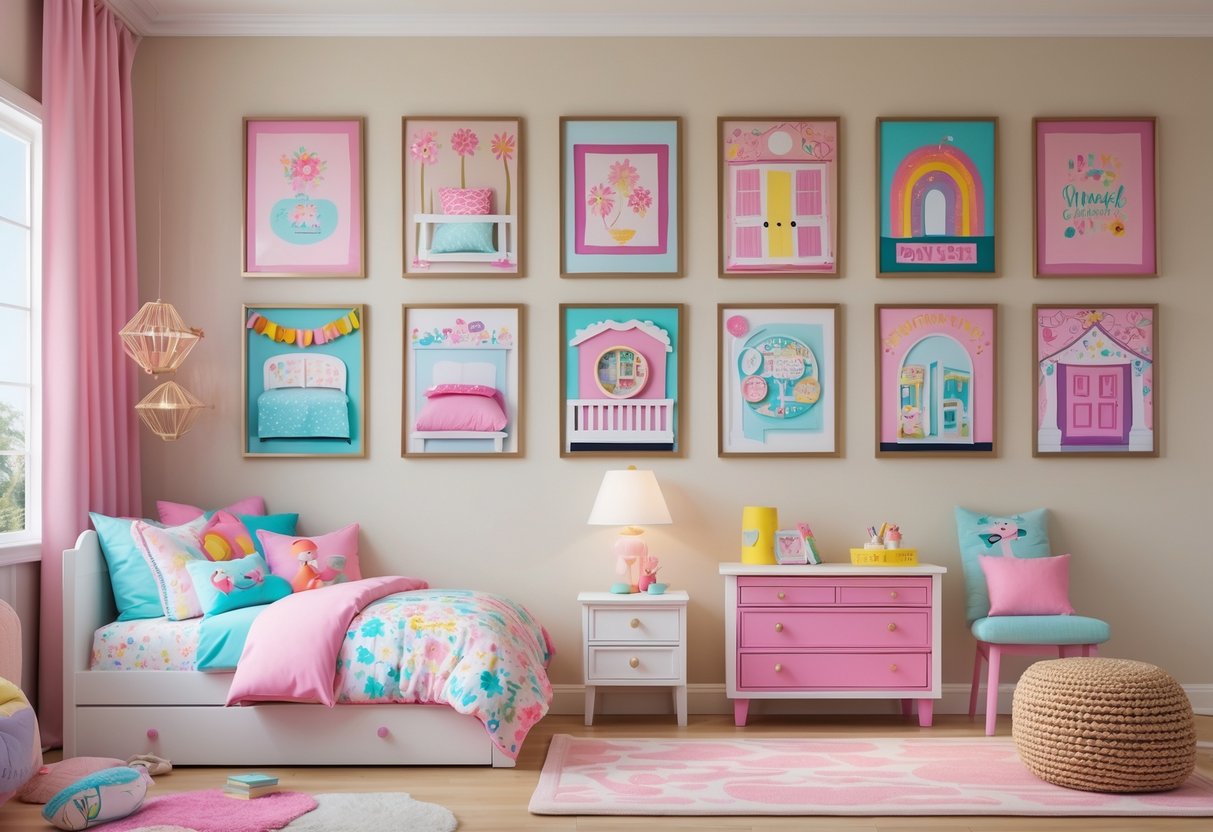
An art gallery wall is a great way to display a child’s artwork. It gives a personal touch and encourages creativity.
Parents can use frames or clipboards to make it easy to swap art. This setup keeps the room tidy and highlights their talent.
6) Reading Nook with Cushions and Lighting
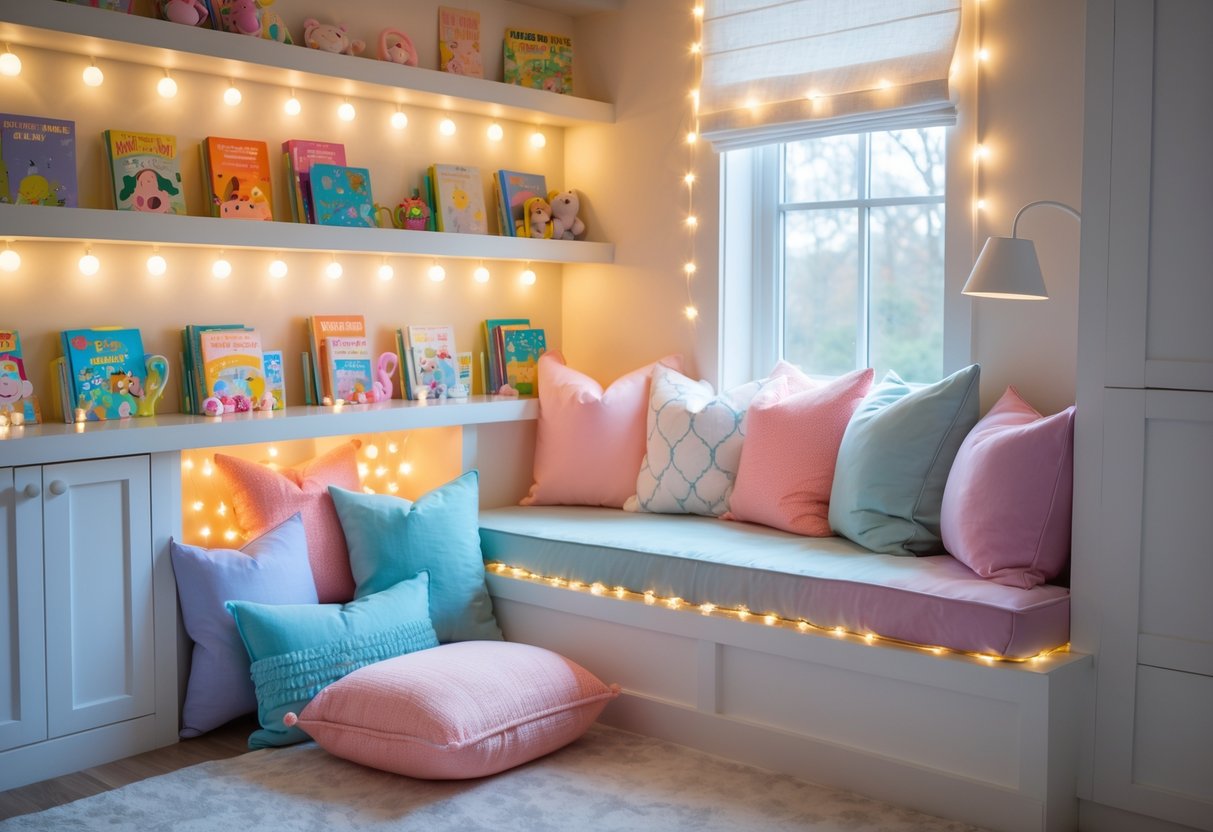
A reading nook with soft cushions creates a cozy spot for kids to enjoy books. Adding a variety of pillows makes the space comfortable and inviting.
Good lighting is important. Natural light from a window or a small lamp helps kids read without straining their eyes. This setup encourages quiet time and focus.
7) Themed Play Kitchen Area
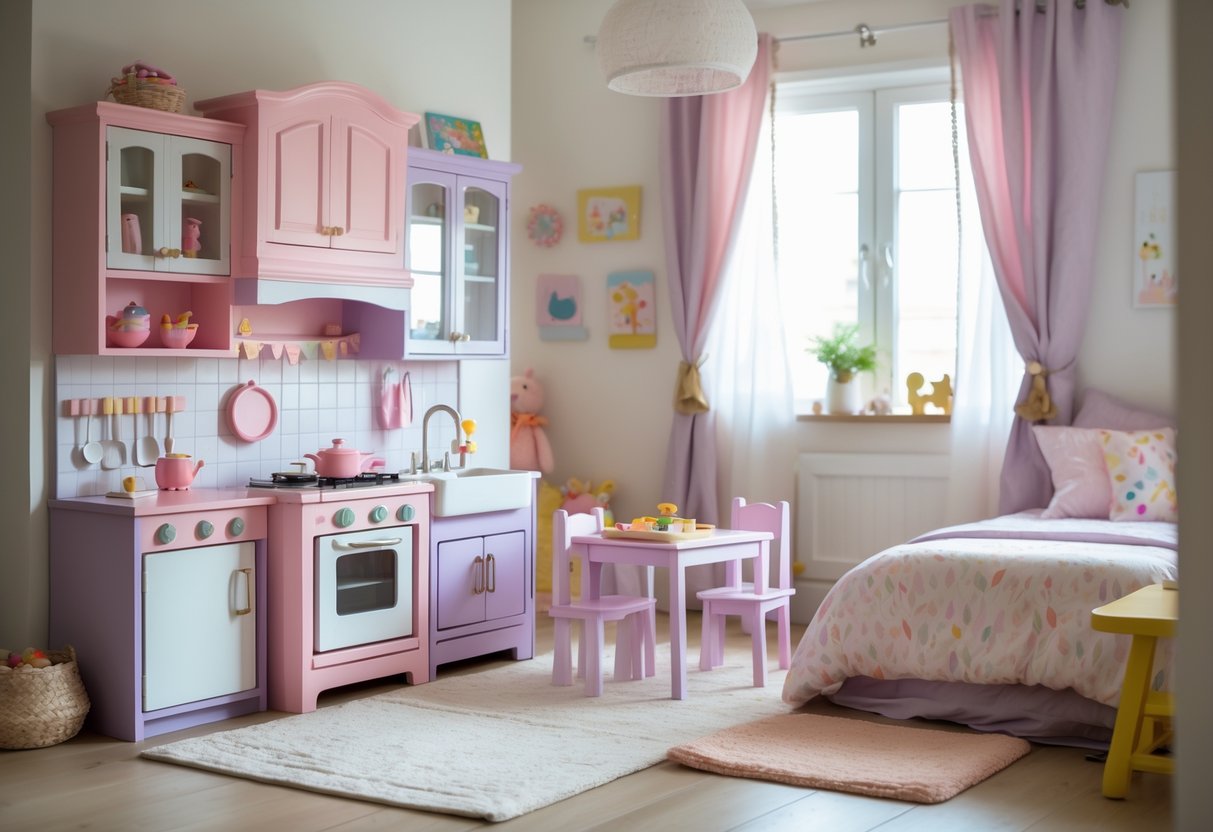
A themed play kitchen can add both fun and function to a girl’s bedroom. It encourages imaginative play and helps develop social skills. Simple setups with pretend appliances and utensils make the space inviting and easy to use. Bright colors and playful designs keep the area cheerful and engaging.
8) Neutral Tones with Vibrant Rugs
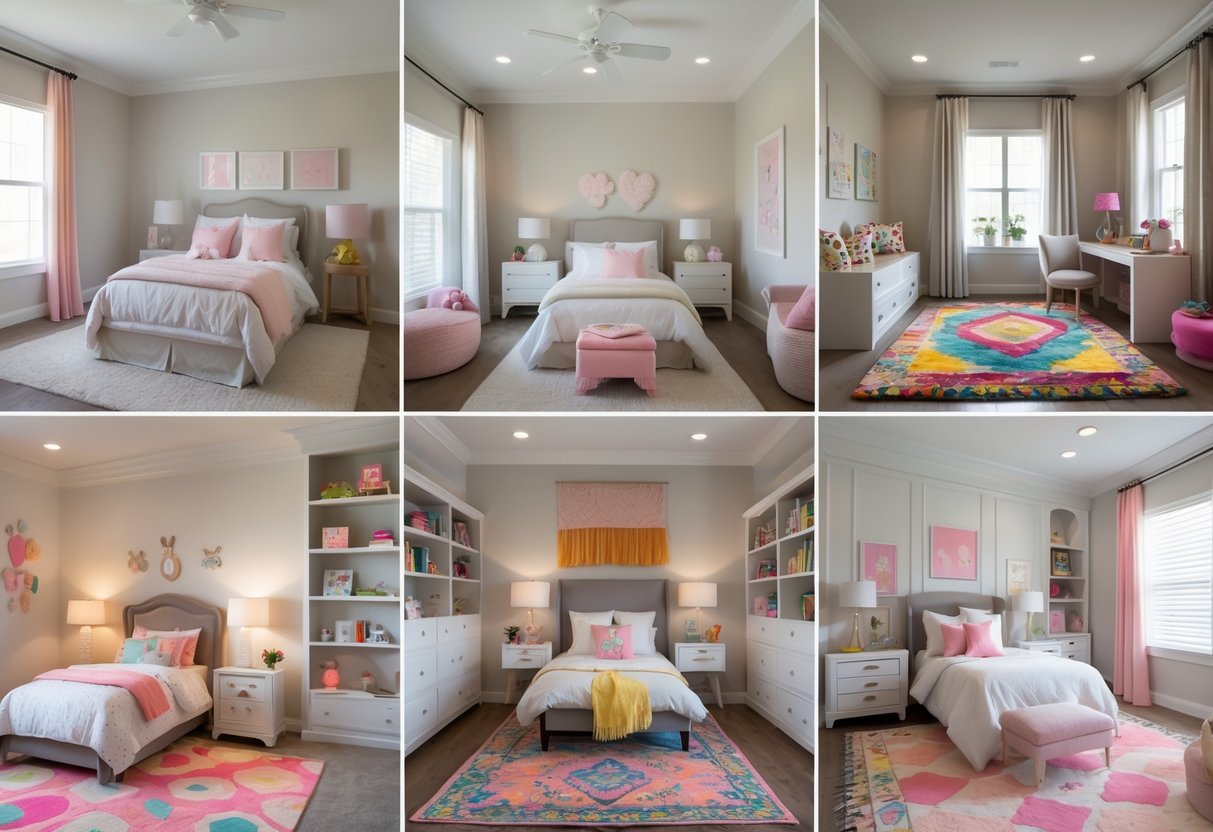
A bedroom with neutral walls and furniture creates a calm, versatile base. Adding a vibrant rug introduces a pop of color that makes the space lively without overwhelming it.
The rug’s texture also adds warmth and comfort. This mix helps balance simplicity with playfulness, making the room inviting and easy to update as the child grows.
9) Decorative Mirrors to Add Depth
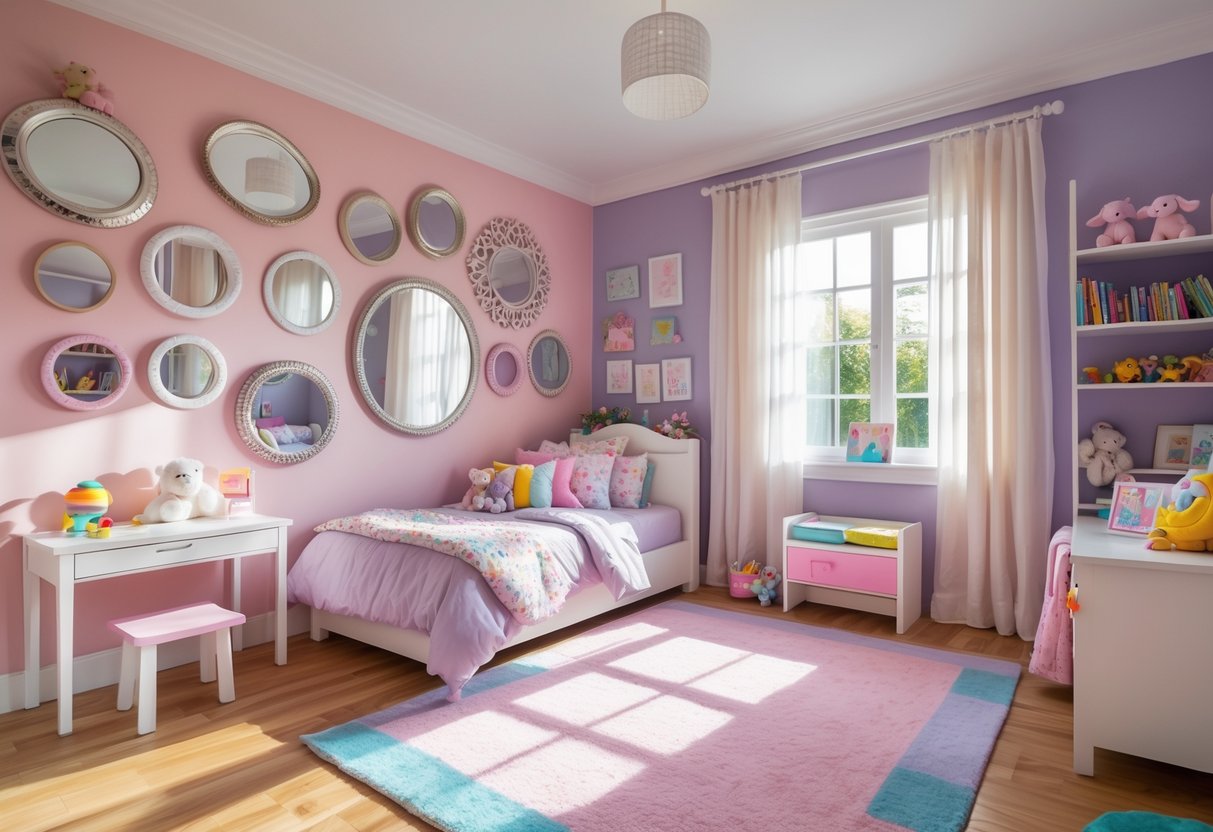
Decorative mirrors help make a girl’s bedroom feel larger and brighter. They reflect light and open up small spaces. Choosing mirrors with colorful or unique frames adds personality and style. They can be hung on walls or placed on dressers to create a fun, functional décor element.
10) Adjustable Lighting Fixtures
Adjustable lighting fixtures offer flexibility as a child grows. They can change colors or brightness to fit different moods and activities.
These lights help create a calm or playful atmosphere, making the room useful for both rest and work.
Parents can choose fixtures that are easy to control and safe for kids to use.
Key Principles of Kid-Friendly Bedroom Design
A kid-friendly bedroom should balance safety, comfort, and creativity. It is important to use durable materials and furniture that can withstand daily use.
Colors and decorations need to reflect the child’s personality but also remain flexible enough to adapt as they grow. Neutral bases with pops of color are a good choice.
A functional layout is key. Zones for sleeping, playing, and studying help organize the space and support daily routines.
Storage plays a big role. Easy-to-reach shelves, bins, and drawers encourage organization and independence.
Key design features include:
| Feature | Purpose |
|---|---|
| Safe furniture | Prevents injuries and is child-friendly |
| Adjustable decor | Grows with the child’s interests |
| Multi-use areas | Supports different activities in one room |
| Good lighting | Provides comfort and supports tasks |
Inspiring wall art, soft textiles, and personal touches make the room inviting. However, clutter should be minimized to maintain order.
Designers recommend using removable or adaptable decor like wall decals and string lights. This approach allows for easy updates without big changes.
Ultimately, the design should support the child’s development by creating a space that is practical, fun, and comfortable.

